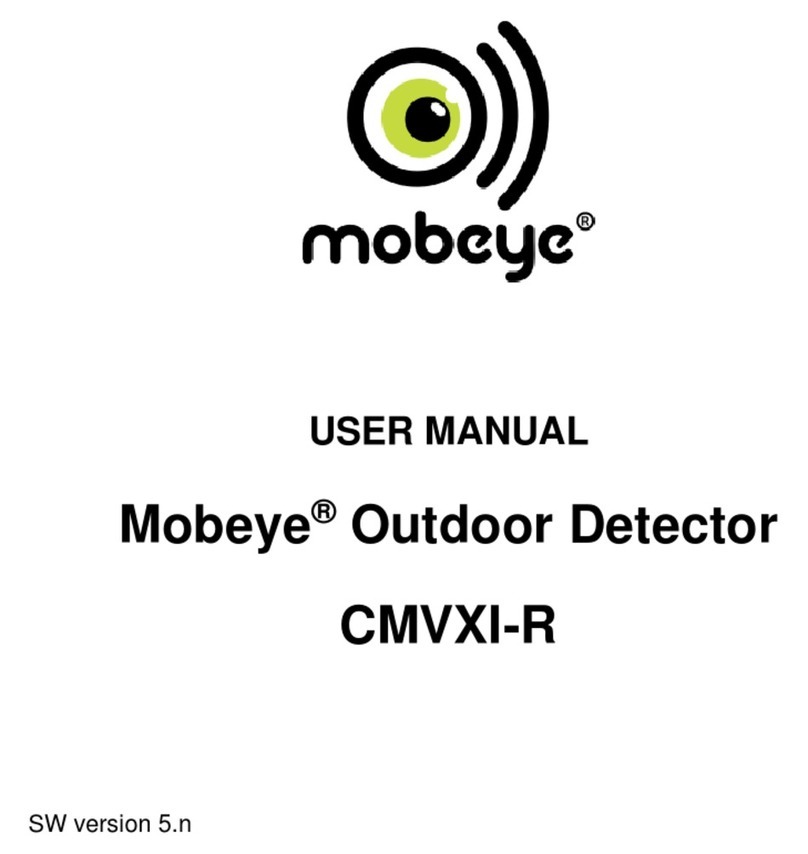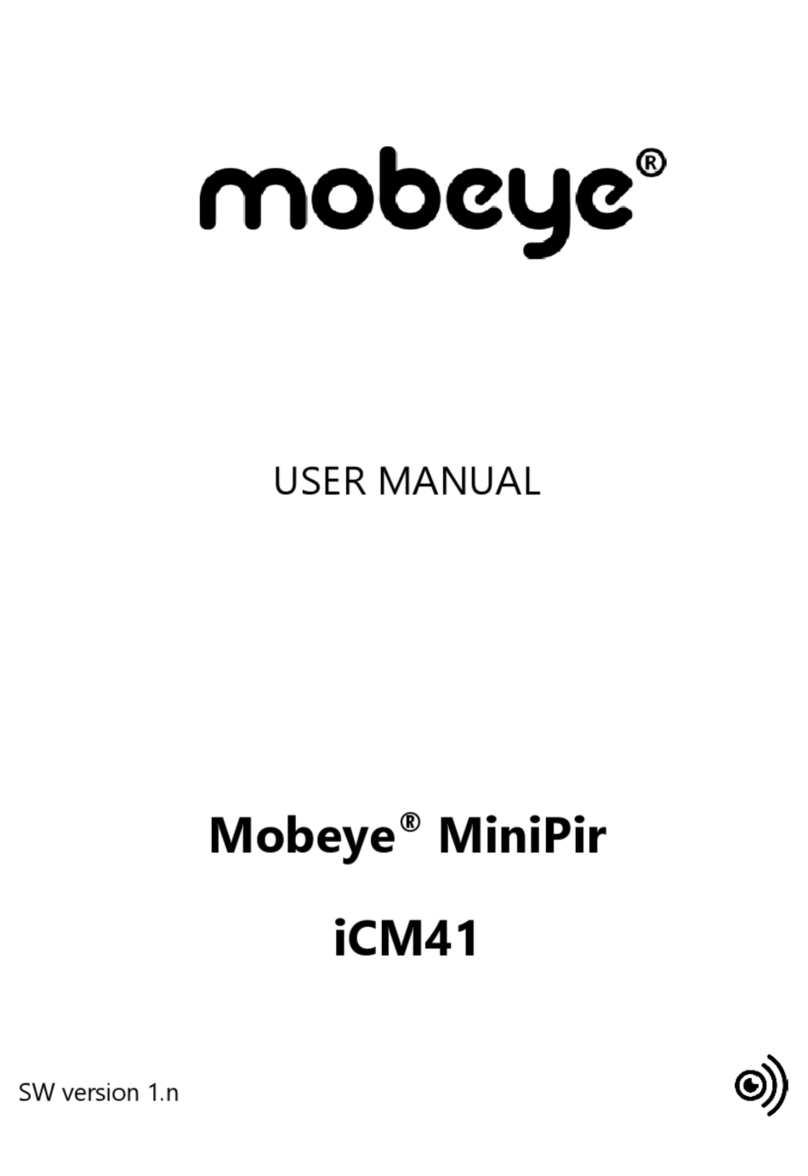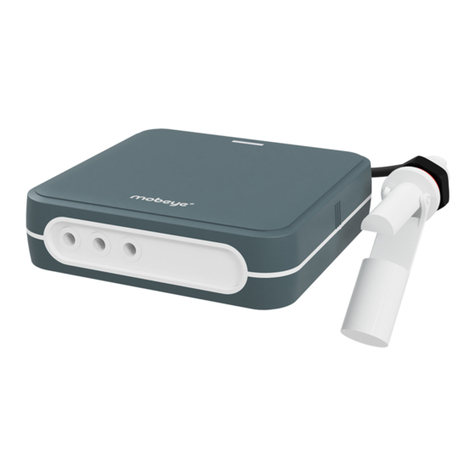5
2.5 INSERT THE BATTERIES
Insert the two batteries (CR123) in the module. Use the +/- indication for the correct
placement. If you replace batteries the settings will not be deleted, since they are stored
in the device memory.
2.6 ENTER THE PROGRAM MODE
To activate the unit in the portal, the GSM module needs to be open and connected to
the network.
Directly after inserting the batteries, the Mobeye Outdoor Detector switches to the
program mode. First the GSM module establishes network connection. During this time
the LED in the tag reader flashes green and red. Within 10-30 seconds the connection
is established and the LED starts flashing 1 sec. on/1 sec. off (or stays on continuously
in case the unit was registered in the Mobeye Internet Portal).
The Mobeye Outdoor Detector returns to the program mode by holding the tag to the
tag reader for 5 seconds (make sure the tag connects to the metal plate and the ring at
the same time), until the LED starts flashing red/green. Once it has GSM connection it
will be flashing again (or stays on continuously). Alternatively the batteries can be re-
inserted, without holding the tag to the reader.
As long as the unit is in program mode, the status green LED is on (or flashing 1 sec.
on/1 sec. off if the module has no configuration). During the first 3 minutes, the GSM
module remains active, ready to be registered in the Mobeye Internet Portal. After 3
minutes a time-out occurs and the GSM module switches off in order to save the
batteries. The unit returns to the low power operational mode.
2.7 ACTIVATE THE DEVICE
When the Outdoor Detector is in initial
(factory) status and the batteries are
inserted (so the LED is flashing), you

































